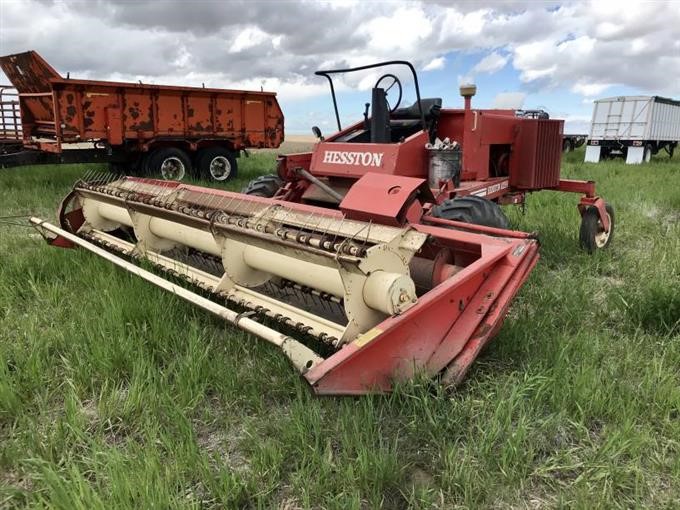
I'm in mid lower Michigan, so my fields are kind of spread out. I have gates I have to squeeze through and I have one field I have to transport it to and a 9 footer takes up more than half a road as it is. I can't really go any larger than 9ft though. I only ask about the self-propelled because I found an old Hesston, but I more or less bought my 2020 for doing hay, so I have a tractor. In your price range you should be able to get a late model 1014, or better yet, an older 1160. Dealer support needs to play a part, as well, especially in older machinery. The biggest differences I have seen are the New Hollands cut more acres per hour, and the Hesstons are simpler, easier, and cheaper to fix/maintain. The New Holland are for the guys covering more acres, and the Hesston are for the smaller acerages. Around here we see mostly New Holland and Hesston. The New Hollands would run away from them like nothing, and even the Hesstons would cut just as fast or faster, while being simpler, easier to maintain, and less expensive. The flails won't plug in an anthill or slug as much as the crimper type, but the crimpers do a far better job on things like alfalfa when it comes to even conditioning without pulling off leaves.Īs to brand.I hate to tell you this since you are a JD guy, but until fairly recently, the JD units just weren't up to snuff with the competition. With a trailing type, you will always be eating dust on at least one side of the field.Ĭrimpers vs. Also, with a swing-tongue machine, if your tractor doesn't have a cab, you can start from the downwind side of the field, and not have all the dust/bugs swirling around you as you go. The swing tongue takes 2 hydraulic circuits, and some trailing units only need one once swung out to field position. If you are just swathing, not a big deal, but if you are planning to use your swather to make a windrow, the swing tongue are far better to follow with a baler. Swing tonge machines go back and forth across the field after you do the edges to give yourself room to turn around. Trailing types you generally pull around and around the field, working towards the center. There are also two types of pull types: trailing, and swing-tongue. Since you are not a full-time hay producer I doubt the acre or two per hour more productivity of the self-propelled would be worth the trouble of one more engine to upkeep, batteries to charge, etc. If you are short a tractor, maybe a good idea, but if you have enough tractors, maybe not. Also, it is one more engine & drivetrain to upkeep. Don't even get me started on how many times we could have rebuilt the entire cutterbar for the price of fixing a leaky hydro unit.

However, the tractor part of the windrower is the expensive part to fix. Not a big deal if you have a power shift, but I don't. Pulling with a tractor requires you to either pick a gear that is a happy medium, or continually shift. This gives you a little more capacity because you can continually drive the optimum speed for field conditions. The self-propelled will also have either a hydrostatic drive, or on some older machines a variable-speed drive at the very least. With the head right there in front of you, it is much easier to see what is going on while still driving, as opposed to having to always look back. The self propelled is far and away more convenient to operate. I've used pretty much everything but the new disk mowers, which I have only seen working from the road.


 0 kommentar(er)
0 kommentar(er)
